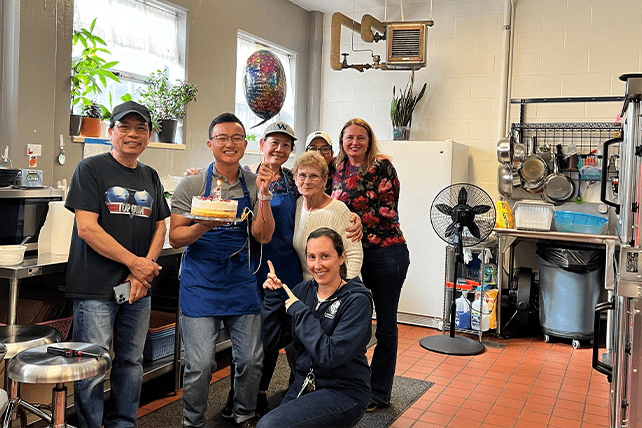Deciding which community to join is part of the discernment process — and social media, as well as access to so much online information, has sometimes made that choice more difficult.
“Everyone shops around today. It’s kind of an Amazon mentality,” said Brother Larry Schatz, vocation director for the Christian Brothers Midwest province. While social media is helpful, it won’t usually tip the balance for a young man trying to figure out whether he belongs in a community, said Schatz. “It’s all about the relationship. They have to be able to trust you before they would take the next step.
“Some (discerners) are really good communicators. Others you barely hear from. Part of it is that their lives are so much more complicated and distracting than mine was,” said Schatz, who is 70.
Men are concerned about whether they are entering a community that will be able to sustain itself in the long term, said the Rev. Frank Donio, a member of the Society of the Catholic Apostolate and executive director of the Conference of Major Superiors of Men.
None of these groups is getting the numbers of applicants it wants, he said. While he attributed part of that to demographics and changes in the way ministry functions in the church, he added that some families also actively discourage men from pursuing a call.
Some men may start the process and realize they want to be married or partnered.
“The idea of giving up sex, or giving up your freedom and obeying, or living poorly or simply is anathema” to many, he said.
To all of that, Donio offers a robust response: “It’s all about me, right? Well, no, it’s not. It’s all about us.”
The way younger generations define identity has changed as well, he said. Some might be attracted to religious life by a community focus on justice. Others are drawn to more traditional forms of worship or the distinctive garb of some communities.
As the pool of potential members and entrants becomes more diverse, there is sometimes friction. One example, said Borneman, was disagreement about hymns and prayer times. But she believes these clashes can also be opportunities. “I don’t know if it’s just the older members who have the challenges. I think it’s for the whole community. If their dominant culture is Anglo-Caucasian, it could be challenging, regardless of age, to members of the religious Institute.”
Rather than minimizing differences (or defaulting to “we’ve always done it this way”), Borneman said she encouraged members to have “authentic conversations about finding common ground.”
As tempting as it might be to try to push young men into the priesthood, especially at a time when there is not an abundance of calls to the religious life, Jao believes it’s important to invite the men in his care to see the big picture as they try to discern their call.

